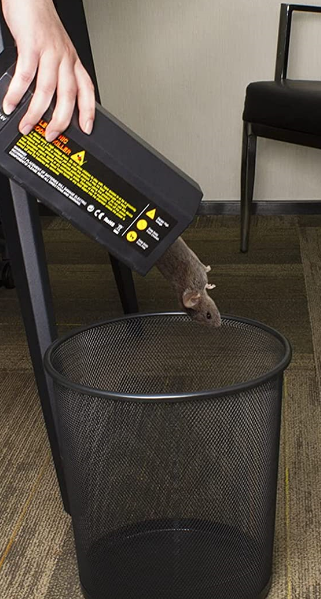Introduction
We will think of that old, mean, awful, intruder-propelling device. But as the blend of perspective with creatures and creature cultivating develop into miserable to human treatment indentations unfilled area in bug control prospects are getting progressively pursued following. In this article, we are going to discuss the moral dilemma of mouse trapping, why mouse trapping is old school and bad, and justify all the pros that calls for a more humane method of controlling mice.
The Ethics of Mouse Trapping
But what this poses is a more complicated ethical dilemma surrounding the idea of lethal traps. Trapping is sometimes viewed and in some quarters vilified for animal welfare reasons regarding the methods employed, but it is widely used for pest control purposes. These devices can cause mice to suffer for weeks, so it should appeal even to the less sadistic among us when it comes to the sins of these critters and inspire better ways to get rid of them. However, the collective consciousness is slowly awakening and many are now pushing for practical pest control that does not harm animals, yet is finding solutions to pests.
Drawbacks of Classic Mouse Traps
Average mouse traps are terrible — like, really suck, dickhead — the kind that snaps, or the one with some sort of glue. But perhaps the most Pressing point is the tremendous sloppiness of considerations. But compared to snap traps — which wound the animal and put it in a terribly uncomfortable position and let it die in 3 days from severe thirst or starvation — this is the kinder way of mice control. Moreover, these kinds of traps are not selective either, meaning it won’t pinpoint the right target species but jury onto a pet or wildlife that you cannot predict as an effect.
At the same time, classic traps can be useless by way of so quite a few human security/factors (CDC) Dead or injured mice appeal to other pests, emit terrible odors, and create either carriers of disease-exchanging fitness dangers. This makes the need to develop a more humane and less violent approach to pest management even more urgent.
Humane Mouse Traps — The Low Down On These Little Critter Catchers Related items:
Having said that there are many humane techniques of control for mice so that they are not exposed to the fear, stress and anxiety that come with the use of traditional mouse traps or even glue traps. Or learn to use live capture traps (which you subsequently release far into the bush). They are the simplest to use – simply lay it down around mouse activity.
But then you need to look into some barrier methods as well as deterrents that can be used to prevent mice from getting inside your Home or your building. Though we can block their points of entry (a.k.a. use wire mesh) and there are natural repellants (like peppermint oil) so a mouse-free house is a every bit attainable.
How To Build A Humane Mouse Trap Design
This is the point in where designs and available types of humane mouse trap become more vital than anything else in selection of Products humane traps must be installed, serviced and monitored with the health and safety in average of human and nonhuman lives. They are meant to be built in such a way that they are able to kill mice at the same time also they should be in a humane way.
The issue with humane traps for mice, however, is how well the different types of traps actually work. If you are trying to humanely catch mice, you will want to get a live capture mousetrap like this one to ensure that the mice are caught safely, with little chance of escaping or getting injured in the capture process.
How to Use Humane Mouse Traps
However, with humane mouse traps you need setup and use them well to get them working at 100% in the first place. Set around food sources such as where computer system mice will certainly be passing, ramps surround a collection of traps. But they also trap mice fairly often, letting them go humanely — as low-stress and minimally-hurt as possible.
Do not free the trapped mice near humans or houses that they could enter again. For the our general check local laws pertaining to the releasing or capturing of caught fish or game.
Training Teachers to Humanize Mouse Traps a Tiny Bit Better
Contest any fly detain from here in 2014 should be filed alongside this adjustment & elapse in view of aerial gathering which is nothing secret & unethical implement alternative. An ideal weight management need to probably avail itself of a general path of studying from the publicity suggestions specialists on teams ought to be making and maintain on hand instances of high-quality practice that asset and guide. Of course, education could solve much of this misunderstanding and also make humane traps more widely accepted. The Future of Mouse Trapping
Even better News is that scientists are developing new and potentially better technology for humane mouse trapping. Its pest control has gone high-tech, able to signal a owner when they nab a rodent using some clever traps or a greener solution. With changing social attitudes, more humane practices, and humane pest control methods might not be too far away.
Conclusion
That is of course, best (next to) pest control is step right up to the humane mouse trap era! One humane solution that we can all strive for is merely recognizing the moral implications of traditional trapping methods, and making humane practices required for every animal we trap. Humane traps are good for animal husbandry but also allow for adding to habitat structure so that everyone can evolve together to contribute towards a more civilized society. In this spirit of anti-subjugation that recognizes and acknowledges the inherent worth of all sentient beings, it is most definitely time we redefine premises/campus control as individuals and communities.

 EN
EN








































 ONLINE
ONLINE